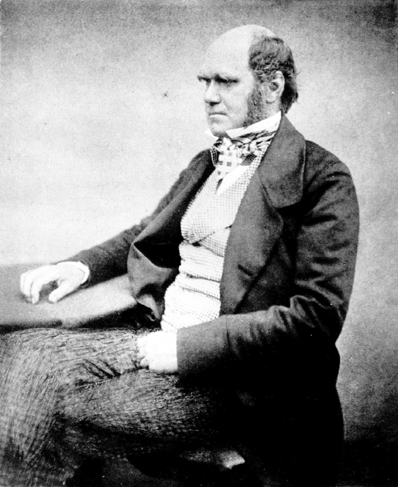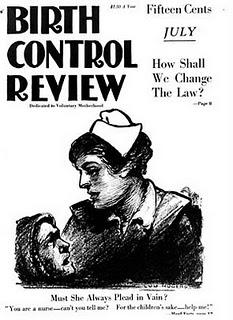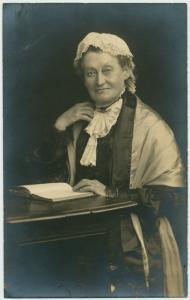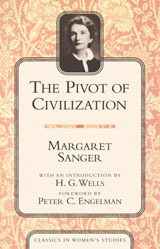 |
| Sir Francis Galton 1822 - 1911 |
The term ‘eugenics’, literally meaning ‘well-born’, was
coined by Sir Francis Galton, who may be considered the ‘father of eugenics’ as
he laid the intellectual foundations of the movement and placed his considerable
prestige and influence behind practical efforts to further it.
Francis Galton was born on the 16th February 1822
in Birmingham.
He has often been described as a ‘child progidy’, learning to read and memorise
long portions of the classics at a young age. It was decided that he should
study medicine and consequently in 1838, aged sixteen, he took up residence as
an ‘indoor pupil’ at Birmingham
Central Hospital.
He then studied medicine for one year at King’s College, London. In 1840 he continued his studies by
reading Mathematics at Cambridge.
He does not seem to have held any recognisably Christian beliefs; in fact he
was later to argue that the improvement of mankind by eugenics ‘must be
introduced into the national conscience, like a new religion'. And he saw ‘no
impossibility in eugenics becoming a religious dogma among mankind.’
Perhaps this idea of the perfectibility of man without God owes its origin to
his membership of the Scientific Lodge of the Freemasons which he joined early
in 1844, becoming a Master Mason on 13th May the same year. A
central tenet of Freemasonry is a naturalism which pursues human ‘progress’ without
any reference to God or supernatural grace and it would be very surprising if
there were no connection between Galton’s ideas and his membership of the order. The year 1844 also saw the death of his father which left him an inheritance
sufficiently large that he no longer needed to train for a profession. He spent
the next few years travelling and on his return to Britain engaged in various
scientific pursuits.
 |
| Charles Darwin 1809 - 1882 |
The publication of On
the Origin of Species by his cousin Charles Darwin was one of the most important
events of his scientific career. He wrote that it ‘made a marked epoch in my
own mental development, as it did in that of human thought generally’ and that
its effect was ‘to arouse a spirit of rebellion against all ancient authorities' whose
teachings he thought were opposed to scientific facts.
However it is worth remembering that many of those things that Galton considered
‘facts’, such as the inferiority of the African races, have since been disputed
or rejected all together. Galton began to apply Darwin’s theory to the study of variations among
human beings and became convinced that mankind could and should be made the
object of selective breeding, after the manner of animals, in order to increase
the frequency of ‘superior’ qualities, such as intelligence.
There
is nothing either in the history of domestic animals or in that of evolution to
make us doubt that a race of sane men may be formed, who shall be as much
superior mentally and morally to the modern European, as the modern European is
to the lowest of the Negro races.
Galton spent the rest of his life pursuing ‘race improvement’.
One of his suggestions was that the Chinese should be encouraged to migrate to Africa to ‘out-breed
and finally displace’ the ‘inferior
Negro race’. He argued that ‘average negroes possess too little intellect,
self-reliance, and self-control to make it possible for them to sustain the
burden of any respectable form of civilization’ whereas ‘the Chinaman is a
being of another kind, who is endowed with a remarkable aptitude for a high
material civilization.’ Essentially he saw the Chinese as an evolutionary
‘competitor’ to the indigineous Africans. The elimination of the latter by
outbreeding was a ‘gain’ which ‘would be immense to the whole civilized world’.
It was a small step, made in a few generations, from justifying the slow
elimination of a ‘lesser race’ by outbreeding to justifying the speedier process
of extermination by genocide.

Sir Francis Galton
was concerned not only with the elimination of inferior races but also with the
perfecting of white Europeans. Like many of his contemporaries he was convinced
that the population of Britain
was ‘degenerating’.
He wrote to the Times in 1909 to complain that ‘the bulk of the community is deteriorating’.
He divided the nation into three categories; a minority of ‘desirables’,
a larger number of ‘passables’, and another minority of ‘undesirables.’ He advocated awarding diplomas to men and
women of exceptional intellectual and physical qualities and then encouraging
them to intermarry. He recommended that the wealthy seek out promising young
persons among the poor for their patronage, suggesting that ‘it might
well become… as much an avowed object of honour, for noble families to gather
the best specimens of humanity around them, as it is to maintain fine breeds of
cattle and so forth’.
Galton complained that ‘a considerable part of the huge
stream of British charity furthers, by indirect and unsuspected ways, the
production and the support of the Unfit.’ Rather than being wasted on ‘harmful
forms of charity’ resources should instead be directed to the ‘production and
well-being of the Fit.’ He argued that ‘undesirables’ should still be cared for
but insisted that ‘by means of isolation, or some less drastic yet adequate
measure, a stop should be put on the production of families of children likely
to include degenerates.’ In
his work Eugenics: Its definition, scope and aims he expressed his belief
that if ‘unsuitable marriages from the eugenic point of view were banned
socially, or even regarded with the unreasonable disfavor which some attach to
cousin-marriages, very few would be made.’
Sir Francis Galton was the primary originator of the
‘science’ of Eugenics but the movement he started soon spread. One of the first
results was that numerous attempts were made to sterilise those deemed
‘undesirable’. A private members bill that would have legalised voluntary
sterilisation was defeated in the House of Commons in 1931 but in the United States
compulsory sterilisation was legalised in many states and upheld by the Supreme
Court in 1927. In other US
states laws were passed forbidding certain groups to marry. It is claimed that
in Sweden
between 30,000 – 62,000 ‘undesireables’ such as the mentally ill were
sterilised under varying degrees of compulsion. The province
of Alberta in Canada
permitted the sterilisation of aboriginal girls in ‘native schools’ and
eugenics has been seen as an important factor behind the policy of removing
mixed race children from their aboriginal parents. In Australia it
was thought that Aborigines would die out, if they were kept apart from whites,
because of their evolutionary inferiority. Eugenic arguments were also deployed
in Japan
to promote forced sterilisation and then, in 1948, the legalisation of
abortion.
The connection between eugenics and abortion is very clear.
If one human being is considered of less worth than another, and if their existence
is seen as a threat to the well-being of the race, then it follows logically
that there will be those who wish to resolve the problem, often by more direct
means that those advocated by Sir Francis Galton. Towards the end of his life Galton
was praised by the Jewish Chronicle
for his life spent ‘improving the fitness of the human race and striving to
secure that children born into the world shall be well born in the sense that
they shall not start life handicapped due to physical defects.’
The abortion industry, in its relentless war against unborn children with
disabilities, has simply taken this position to its logical conclusion.
















